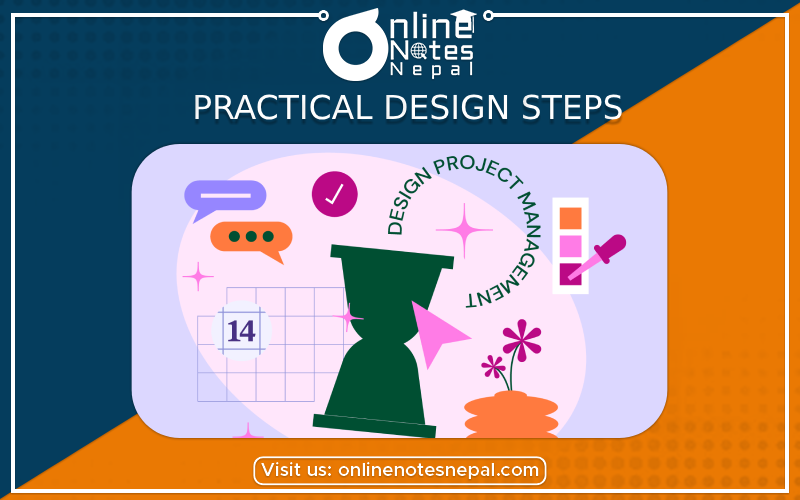Published by: Dikshya
Published date: 10 Jul 2023

The practical design steps encompass the activities and considerations that designers typically undertake to move from initial requirements to the final implementation of a digital circuit. These steps include defining requirements, creating system specifications, designing the logic and circuitry, simulating and analyzing the design, optimizing it, performing physical design and layout, verifying its correctness, fabricating the circuit, testing it, and finally integrating and deploying it within the intended application.
These steps help ensure that the designed circuit meets the desired functionality, performance, and other requirements, while considering factors such as optimization, verification, physical constraints, and manufacturing considerations. Here are the key steps typically followed in the design process:
- Define the project requirements, including the desired functionality, performance targets, and any specific constraints.
- Conduct a thorough analysis of the problem and identify the input/output requirements, logic operations, and timing considerations.
- Break down the problem into smaller modules or blocks that can be individually designed and integrated later.
- Develop a high-level system architecture, outlining the major components and their interconnections.
- Create a detailed specification document, capturing the design requirements, input/output behavior, and any specific design considerations.
- Choose a suitable design methodology or approach, such as top-down or bottom-up design.
- Perform preliminary research to identify potential existing solutions or reusable components.
- Start designing the individual modules or blocks, considering the required logic functions, data paths, and control signals.
- Select appropriate digital components, such as logic gates, flip-flops, multiplexers, and decoders, based on the design requirements.
- Develop the schematic diagrams for each module, showing the interconnections and component values.
- Simulate the design using software tools or hardware description languages (HDLs) to verify its correctness and functionality.
- Optimize the design for factors such as power consumption, area utilization, or performance.
- Perform timing analysis to ensure that the design meets the required timing constraints and can operate reliably.
- Create a physical layout for the design, considering factors like signal integrity, noise immunity, and manufacturability.
- Perform physical design tasks, including floor planning, placement, and routing.
- Use design rule checking (DRC) tools to ensure compliance with manufacturing constraints and standards.
- Generate the necessary design files and documentation required for fabrication, such as GDSII layout files.
- Send the design files to a semiconductor foundry or manufacturing facility for fabrication.
- Receive the fabricated integrated circuit (IC) and perform visual inspection and quality control checks.
- Develop a testing strategy, including functional testing, performance characterization, and validation against specifications.
- Conduct thorough testing of the fabricated IC using appropriate test patterns and techniques.
- Analyze and debug any issues or failures encountered during testing.
- Refine the design and iterate based on the testing results and feedback.
- Document the final design, including detailed design files, test results, and any modifications made during the process.
- Integrate the fabricated IC into the larger system or product, validate its functionality, and deploy it for its intended use.
Throughout the design process, documentation and revision control are important to keep track of design decisions, modifications, and any issues that arise. Collaboration and communication with other team members or stakeholders are crucial for a successful design implementation.